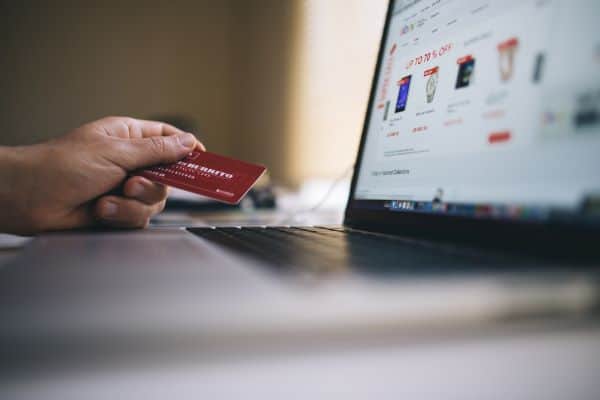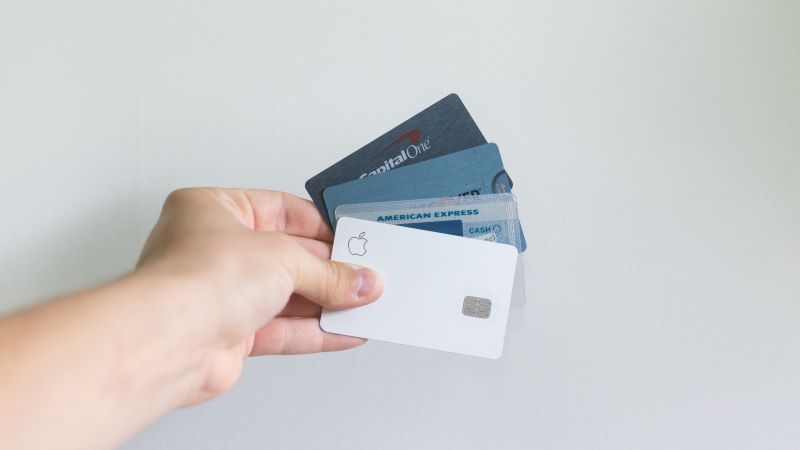There was a time when a business could survive on a cash-only basis, but lately–and especially since the pandemic–it seems that credit cards are the currency of the future. You can’t manage a small business without credit cards anymore, especially not if you’re going to sell anything online or over the phone. They’re a must, and knowing how to accept credit card payments for small businesses is vital.
So you want to be able to take credit cards, but how do you go about it? Let’s take a look at how to accept credit cards as a business: what is a point of sale system? How does credit card processing work? And how do you take credit card payments?
How Do Small Businesses Accept Credit Card Payments?
The whole point of credit cards is to make it easier to shop for the cardholder. You don’t have to carry cash around. You don’t have to make change. You don’t have to write a check. You don’t have to worry if you have enough money in the bank–the credit card companies take care of all that for you. But what about for the business owner? Does the credit card make things easier for them? Well, yes, and no.
Yes, credit cards cut down on a lot of the things that make running a small business hard: bookkeeping, for one, is much easier when everything is electronic. You don’t have to make deposits and count cash. You have a much easier time stopping fraud than you did with checks. But on the other hand, you have to deal with software, if you’re an online business, and hardware if you’re a brick-and-mortar store. And you have to deal with fees.
So do the benefits outweigh the negatives? We think they definitely do, and as time passes, the case for credit cards just gets stronger.
What is a Point of Sale System?
A Point of Sale system (or POS system) is the place where your customer makes their payment with their credit or debit card. In this way, the POS is really the central system around which everything in your business rotates. All transactions have to go through the POS, and it is the method through which you get your funds.
The typical POS system contains the following things: a monitor that displays your product database and other functions, including employee punch-in/punch-out and the ability to view sales reports; a barcode scanner to automate the checkout process, as barcodes not only pull product info but also manage inventory; a credit card reader, which has to be EMV-compliant (that stops potential fraud); a receipt printer, because not everyone has gone paperless yet; and a cash drawer, because people still use cash (even though it’s going away).
But a POS system is a lot more than just that hardware. A good POS system will be able to do sales reporting, customer management, inventory management and employee management. More and more, these centralized POS systems are doing more and more and, by being one single piece of software, they all are integrated and work together to make the business run smoother and more efficiently. It’s about much more than just the checkout–it’s about managing your business.
How Does Credit Card Processing Work?
To understand how credit card processing works, we have to understand all the entities who are part of the process. The process isn’t complicated, but there are a lot of working parts.
First, there’s the cardholder, who is the person who owns the credit card. Next is the merchant, who is the business owner (that’s you). Then there’s the acquiring bank, who is the bank that the merchant contracts with to create and maintain their merchant account. There may be an acquiring processor, who is a third party the acquiring bank hires to manage the operations of their credit card processing and customer service. Then we have the issuing bank, or the cardholder’s bank. Finally, we have the card association, such as Visa and Mastercard, who manage the credit card networks.
Understanding the Process
1. Authorization
Now that we know the roles, let’s talk through the process. When a cardholder wants to purchase something from you they present their card to you. This is typically done by swiping the card, but it can be online, or with an app, too. This starts the POS system’s work. The POS gathers all the card’s information, and sends it to the acquiring bank or processor. That acquiring bank or processor then sends the information to the credit card network and this is where the authorization step takes place. Authorization will check the credit card number, expiration date, billing address (using Address Verification System, AVS), card security code (such as CVV) and payment amount.
2. Authentication
Now the card has been authorized, and the next step is authentication. This is where the issuing bank checks to make sure that there is no fraudulent activity. It checks the AVS or card security code. Then it checks to make sure there are sufficient funds available. If everything checks out, the issuing bank will put a hold on the cardholder’s account for the amount of the purchase, and send a message back to the merchant’s POS that authorization has been approved.
And all of this takes place in two to three seconds!
3. Clearing and Settlement
But the funds aren’t in the merchant’s account yet. The POS gathers all of the approved authorizations into a batch, and then submits them to the acquiring bank or processor, typically once a day. The processor receives the batch and submits it to the card association networks, who then send them to the issuing banks. The issuing banks transfer the funds to the credit card network, keeping an interchange fee first. The credit card network keeps a fee, and then sends the funds to the acquiring bank. That bank takes a fee and then deposits the money into the merchant’s bank account. This typically all takes place within 24-48 hours of purchase. The final step is that the cardholder gets their bill and makes their payment.
But what about all those fees? Where do they go?
Where Do the Credit Card Fees Go?
There are typically three types of fees on credit card purchases, and yes, they come out of the merchant’s money. Usually these fees are between 1.79% and 2%. This is referred to as the Merchant Discount Rate. How does that rate get divided up?
Interchange fees are the biggest portion of the rate. These go to the issuing bank (think of this bank as the bank whose logo is on the card: Wells Fargo, Citi, Bank of America, etc). This is usually 1.75% + $0.10.
Assessment fees go to the credit card association (Visa, Mastercard, etc): They’re typically between 0.11% and 0.095%.
Account provider fees are the final bit, from the acquiring bank (the merchant’s bank), and are usually around 0.07%.
So, yes, there are fees that go with credit card payments, but they’re not as scary as they sound. (And that thing about “No credit card purchases for anything under $5”? That’s a myth. The Merchant Discount Rate is 2% whether the credit card purchase is $5 or $500.)
Do You Need a Merchant Services Account?
A merchant services account is something that can save you money if you do a large volume of credit card business (more than $10k per month, usually). There are monthly fees and expensive setup cost, but if you’re doing that much business it’ll pay off. On the other hand, if you’re a smaller business you can use a Payment Service Provider (PSP). This third-party credit card processing service will come with a small fee, but no monthly fees.
How to Take Mobile Payments

Accepting mobile payments is becoming more and more a necessity for small businesses, whether it means accepting payments on your mobile device or allowing people to pay with their mobile device. Here are some of the most common ways to accept mobile payments:
CloverGo
CloverGo is a contactless reader that will turn your smartphone into a payment system that allows for either inserting or swiping cards, as well as ApplePay, SamsungPay, and GooglePay. It lets you set rates, tips, worker permissions, and is fully customizable. It texts or emails receipts to customers, and the app lets you keep track of all transactions.
iCharge
Don’t let the “i” fool you: this works on Apple or Android phones. It’s a card reader that works with the SwipeSimple app. Offering real-time reporting, electronic receipts, inventory management, tips, sales reports, and more, it’s almost a mini-POS.
CloverFlex
A device of it’s own, about the size of a phone, you can just hand this to your customer and they can swipe, insert, tap, type, or sign. It has a full-featured POS. A durable, full-powered solution for a busy business.
How to Take Online Payments

VMS Gateway
This cloud-based app is compatible with most e-commerce platforms and will allow you to properly take online payments. With a team of dedicated developers, they can work your existing online store to integrate it with the VMS Gateway, or they can build you a store from the ground up. The SyncPay Plugin will connect you with QuickBooks, so you can handle all of your transactions within that environment. It also offers recurring billing and sends payment reminders, so you can use it for long-term purchases and services, and with paperless billing, everything is stored on the cloud and nothing ever gets lost. Contact VMS today

